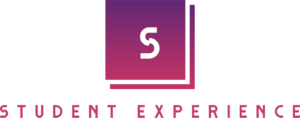
Optimizing Learning: Unveiling Effective Curriculum Design Strategies
In the ever-evolving landscape of education, one constant remains: the quest to optimize learning experiences for students. At the heart of this endeavor lies curriculum design, a fundamental aspect of education that shapes what and how students learn. Whether you are an educator, a curriculum designer, or simply someone curious about the art of teaching and learning, this blog post is your gateway to uncovering the secrets of effective curriculum design.
Understanding Curriculum Design
The journey begins by understanding the very essence of curriculum design. It’s not just about selecting textbooks or crafting lesson plans; it’s a dynamic process that has a profound impact on the educational journey of students. As education has evolved over time, so too has the art of curriculum design. In this section, we will delve into the foundations of this field.
The Role of Learning Objectives
Learning objectives are the North Star of any curriculum. They provide clear direction, guiding both educators and students toward a common destination. But how can well-defined learning objectives transform the learning experience? In this section, we’ll explore their significance and offer concrete examples to illustrate their power.
Tailoring Curriculum to Learner Needs
The cookie-cutter approach to education is a thing of the past. Today, educators recognize that every student is unique, with distinct needs and preferences. In this section, we’ll discuss how to customize curriculum content and delivery to cater to individual learners. Prepare to discover learner-centered strategies that bring out the best in students.
Incorporating Active Learning
Passive learning methods, where students sit back and absorb information, are gradually being replaced by active learning approaches that encourage engagement, critical thinking, and problem-solving. This section will uncover the benefits of active learning and introduce you to various strategies that can transform your curriculum.
Assessment Methods and Feedback
Assessment is more than just grading—it’s a tool for gauging understanding and promoting growth. Here, we’ll dive deep into the world of assessment methods, including formative and summative assessments, and explore the importance of constructive feedback in the learning process.
Keeping Curriculum Current
The world is constantly changing, and so should our curricula. Stagnant content leads to outdated skills. In this section, we’ll discuss the imperative of keeping curriculum current and provide insights into how successful institutions adapt to stay ahead.
Technology and Curriculum Design
In today’s digital age, technology has revolutionized the way we teach and learn. In this section, we’ll explore the symbiotic relationship between technology and curriculum design, showcasing how digital tools, online resources, and e-learning platforms can enhance the educational experience.
Case Studies and Examples
What better way to understand effective curriculum design than by examining real-world success stories? In this section, we’ll present case studies of educational institutions and programs that have thrived through innovative curriculum design. These examples will inspire and inform your own journey.
Tips for Effective Curriculum Design
To wrap up our exploration, we’ll distill the key takeaways into actionable tips. Whether you’re a seasoned educator or new to curriculum design, these insights will empower you to optimize your curriculum effectively.
Conclusion
Effective curriculum design is a dynamic process that empowers educators to shape the future of learning. As you journey through this blog post, you’ll gain a deeper appreciation for the art and science of curriculum design. Together, we’ll unveil strategies that can elevate the learning experience for students and transform the educational landscape.
